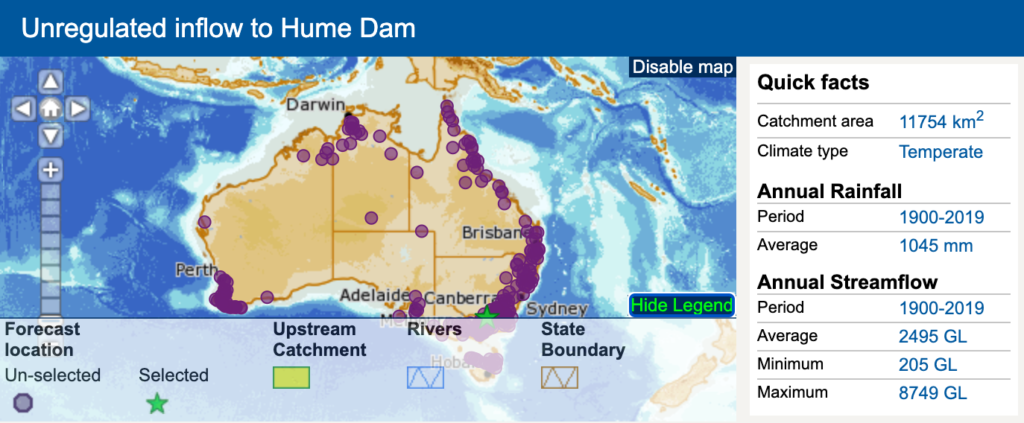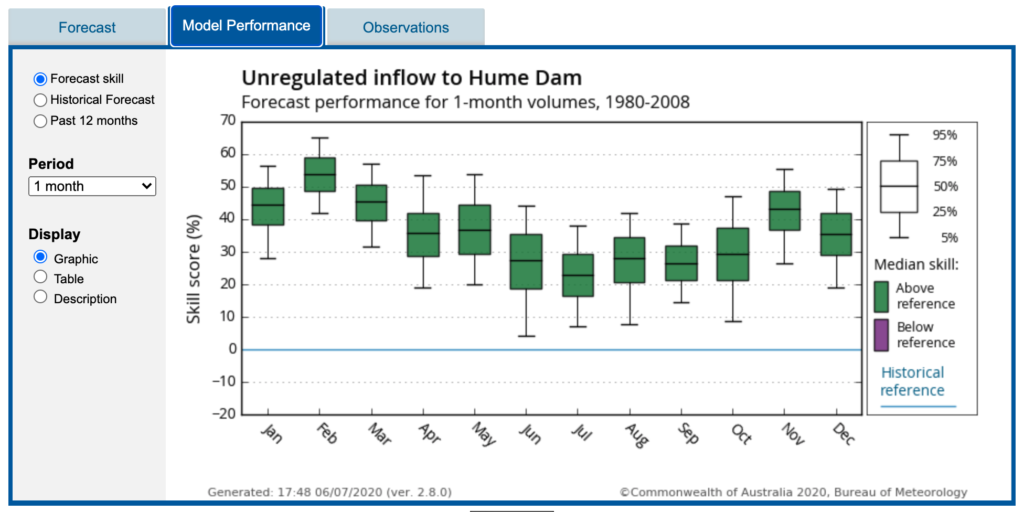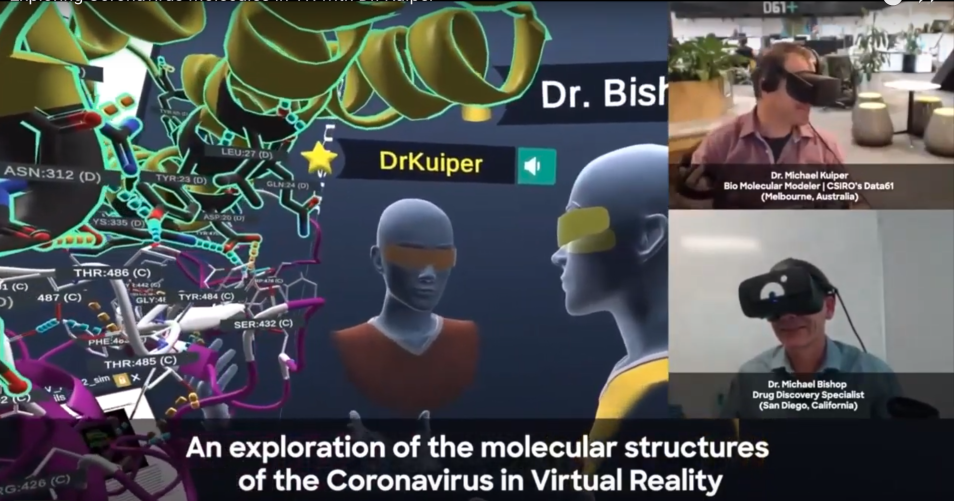
Computational science helps us visualise complex scientific problems. And our new partnership with Microsoft can help us find even more solutions to harder problems.
Advancements in technology let us capture, process and make sense of immense amounts of information. However, without the ability to efficiently store, organise and refine that information, important insights won’t be discovered.
Consequently, this leads to obstacles in solving some of our greatest challenges. And while data may be the new oil, computation is the refinery that transforms it into a product you can touch.
Our scientists have been carrying out research in computational science and applying it to solve real-world problems for nearly 70 years. For example, in fields such as radio astronomy, and climate science. Modern computational science is used to develop new and sophisticated solutions for complex problems and continues to play a key role in speeding up scientific discoveries.
In order to continue to grow in this area, we’ll need to scale our efforts and push boundaries through innovation and new collaborations. This includes partnering with Microsoft, a world-leading technology organisation.
This partnership means we’ll expand our technology solutions and commercialisation ecosystem. On top of that, it will supplement our wide portfolio of digital and data research with exciting peer-to-peer project collaboration with Microsoft Research teams.
This partnership will speed up data-driven research like artificial intelligence and machine learning. It will also be applied to tackle climate change, enhance water forecasting and discover more about viruses on a cellular level.
Before we go into too much detail, let’s start with the basics.
What is computational science?
Computation in science uses problem-solving to understand and solve complex scientific challenges. It’s an interdisciplinary approach which combines engineering, mathematics and advanced computing. In addition, this technique can design and implement models, simulations and algorithmic solutions.
“It improves the interface between the mathematical, machine learning and computing environments. As a result, this makes it a science in itself,” explained Dr Brent Henderson, Director of the Analytics and Decision Sciences at Data61.
“By applying computation, we can understand and interpret the complex world in which we live.”
“Computational science brings modern computing power together with human intelligence in algorithm design and problem specification. This powerful combination allows us to tackle some of humanity’s greatest challenges,” said Dr Gary Delaney, leader of Data61’s Computational Modelling Group.

Computational science is a mix of engineering, mathematics and advanced computing. There are numerous applications using computational science.
What else can be found in computational science?
- Algorithms.
- Mathematical models.
- Computational models.
- Computer simulations.
- Engineering.
- Computer hardware. For example, a graphics processing unit (GPU) and distributed computing platforms.
- Data management.
We apply many of these tools to a wide range of our research and development work.
You can find computational science in your everyday life
Here are some of the ways that you come into contact with computational science:
- Computer hardware, like the Graphical Processing Units (GPU) inside your laptop.
- Image recognition and video processing. Like animal species identification and traffic congestion prediction platforms.
- Natural Language Processing. You can use it to analyse Twitter feed data and identify crisis situations that could require an emergency response. Or to assess a population’s sentiment and level of mental health.
Examples of computation at CSIRO
Computational science has helped us immensely across a wide range of scientific problems. Here are a few examples.

INDRA for Rural and Agricultural Applications. This focusses on climate risk from a crop yield perspective.
Big data analytics to deliver big climate change insights
We’re in a world with growing uncertainty around environmental and climatic risk. So the need to turn those risks into opportunities at the infrastructure level is important.
INDRA is a geospatially enabled big data analytics platform. It allows the integration of a range of relevant datasets about climate, natural hazards, infrastructure, demographics and economic metrics. Consequently, this provides data-driven critical insights.
INDRA applies high-performance computing to computational problems that are either too large or would take a long time for a standard computer to solve.
“INDRA needs to process large volumes of geospatial datasets. This is something that Graphical Processing Units (GPUs) are much more suited to. Especially over traditional Central Processing Units (CPUs),” explained INDRA project lead Dr Mahesh Prakash.
“These datasets include climate and climate projections, infrastructure details, land use planning information, and hazards data including floods and bushfires. As well as financial information such as house price metrics. As a result, all of these datasets must be processed at continental and global scales,” said Mahesh
“High-performance parallel computing is really the only way of solving this problem. And using GPU acceleration is the most elegant solution.”
Improving the reliability of water forecasting
Water is one of Australia’s greatest natural resources. So making efficient, accurate and informed management tools is crucial to the future of our waterways.
We’ve used computation to help design software, systems and toolkits to translate scientific theory into practice for both short-term and seasonal forecasts. This is in partnership with the Bureau of Meteorology and developed through The Water Information Research and Development Alliance (WIRADA).
Our scientists incorporated this methodology into the Bureau of Meteorology’s seven-day ensemble streamflow forecasting service. The tool provides streamflow forecasts with a lead time of up to seven days. This helps river users and water managers make informed decisions about optimal irrigation and reservoir management. As well as environmental flows and reducing transmission and evaporation losses.
Computation allows the resources behind the service to come together and bring out important insights from large quantities of climate and water data. This results in detailed hydrological modelling, statistical hydrology and weather forecasting.

Dr Michael Kuiper and his US-based colleague, Dr Bishop, exploring the structure of the virus using virtual reality. This is on the platform Nanome.
Looking at how the COVID-19 spike protein works using 3D simulation
By using computer modelling, our Data61 scientists can create an accurate digital simulation of SARS-CoV-2, the virus causing COVID-19. This helps researchers and scientists identify the regions of its proteins that could be good targets for vaccines.
By pinpointing mutations in the virus, these models can see how these changes may affect the outcome of any treatments being developed.
“The key thing about computer modelling is that it helps us visualise or better understand the things we’re doing. For instance, virus assays and vaccine trials,” said Dr Michael Kuiper, team leader at Data61.
“The advantage of this is that researchers can improve the process of deciding what to make and test in the lab. And that’s the most expensive and time-consuming part of the procedure. This ultimately speeds up the drug development process,” said Michael.
Our partnership with Microsoft
In June 2020, we partnered with Microsoft. As a result, this reaffirms our commitment to work together for impact.
By partnering with Microsoft and its research teams, our scientists are expediting the training of artificially intelligent models through collaboration. And accelerating robust science and design solutions.
The collaboration will also help promote a sophisticated platform solution, which is based on the needs of our clients. For instance, the platform can take multi-layered and comprehensive data and present it to the user in a relevant, seamless and tangible way with immediate applications. Additionally, the commercialisation opportunities presented by partnering with Microsoft will accelerate critical research. For instance, managing plastic waste and equipping farmers with digital tools of the future. Consequently, it will allow solutions to real-world problems to be spun out more rapidly.
In conclusion, this partnership will ultimately promote both our and Microsoft’s capabilities to solve global challenges.


5th August 2020 at 2:43 pm
Thank you.
‘Big Data’ holds great promise. It will be well not to waste it.
A worthy study is the relationsdhip between atmospheric CO2 and global food production. A study including all the variables e.g. area of land, fertiliser and pesticide use, crop type and variety, etc. etc., would surely yield significant results. It will be important to use original data and not that ‘adjusted’ on some grounds or other. The data engine can work out any valid adjustments for itself.